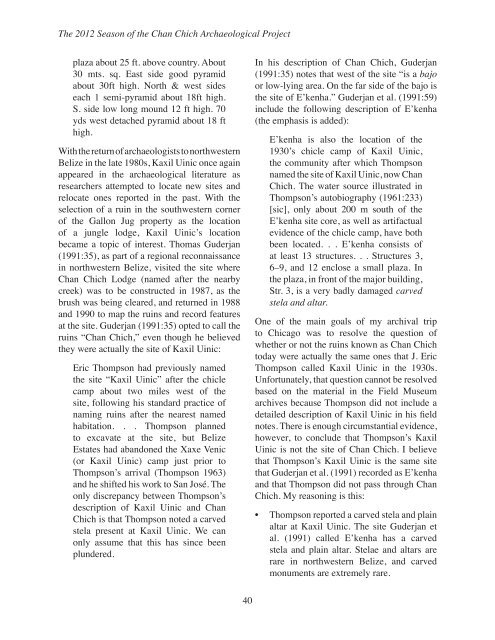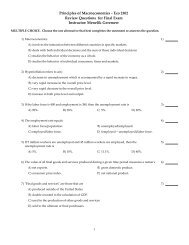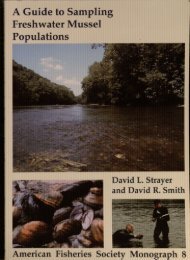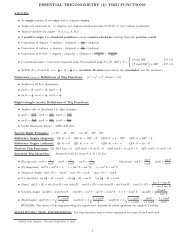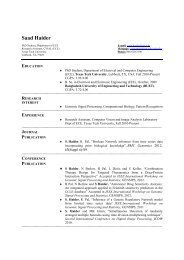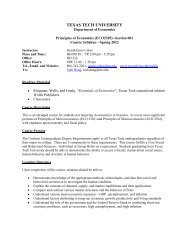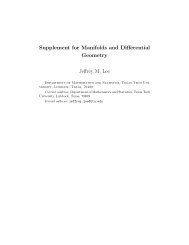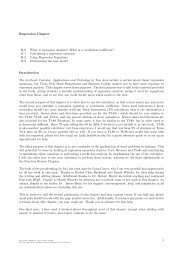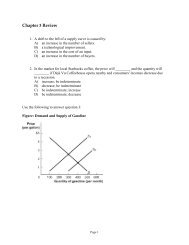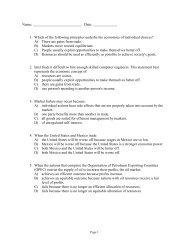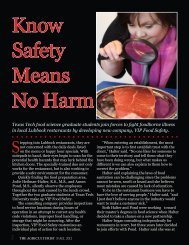Download - MyWeb - Texas Tech University
Download - MyWeb - Texas Tech University
Download - MyWeb - Texas Tech University
Create successful ePaper yourself
Turn your PDF publications into a flip-book with our unique Google optimized e-Paper software.
The 2012 Season of the Chan Chich Archaeological Project<br />
plaza about 25 ft. above country. About<br />
30 mts. sq. East side good pyramid<br />
about 30ft high. North & west sides<br />
each 1 semi-pyramid about 18ft high.<br />
S. side low long mound 12 ft high. 70<br />
yds west detached pyramid about 18 ft<br />
high.<br />
With the return of archaeologists to northwestern<br />
Belize in the late 1980s, Kaxil Uinic once again<br />
appeared in the archaeological literature as<br />
researchers attempted to locate new sites and<br />
relocate ones reported in the past. With the<br />
selection of a ruin in the southwestern corner<br />
of the Gallon Jug property as the location<br />
of a jungle lodge, Kaxil Uinic’s location<br />
became a topic of interest. Thomas Guderjan<br />
(1991:35), as part of a regional reconnaissance<br />
in northwestern Belize, visited the site where<br />
Chan Chich Lodge (named after the nearby<br />
creek) was to be constructed in 1987, as the<br />
brush was being cleared, and returned in 1988<br />
and 1990 to map the ruins and record features<br />
at the site. Guderjan (1991:35) opted to call the<br />
ruins “Chan Chich,” even though he believed<br />
they were actually the site of Kaxil Uinic:<br />
Eric Thompson had previously named<br />
the site “Kaxil Uinic” after the chicle<br />
camp about two miles west of the<br />
site, following his standard practice of<br />
naming ruins after the nearest named<br />
habitation. . . Thompson planned<br />
to excavate at the site, but Belize<br />
Estates had abandoned the Xaxe Venic<br />
(or Kaxil Uinic) camp just prior to<br />
Thompson’s arrival (Thompson 1963)<br />
and he shifted his work to San José. The<br />
only discrepancy between Thompson’s<br />
description of Kaxil Uinic and Chan<br />
Chich is that Thompson noted a carved<br />
stela present at Kaxil Uinic. We can<br />
only assume that this has since been<br />
plundered.<br />
In his description of Chan Chich, Guderjan<br />
(1991:35) notes that west of the site “is a bajo<br />
or low-lying area. On the far side of the bajo is<br />
the site of E’kenha.” Guderjan et al. (1991:59)<br />
include the following description of E’kenha<br />
(the emphasis is added):<br />
E’kenha is also the location of the<br />
1930’s chicle camp of Kaxil Uinic,<br />
the community after which Thompson<br />
named the site of Kaxil Uinic, now Chan<br />
Chich. The water source illustrated in<br />
Thompson’s autobiography (1961:233)<br />
[sic], only about 200 m south of the<br />
E’kenha site core, as well as artifactual<br />
evidence of the chicle camp, have both<br />
been located. . . E’kenha consists of<br />
at least 13 structures. . . Structures 3,<br />
6–9, and 12 enclose a small plaza. In<br />
the plaza, in front of the major building,<br />
Str. 3, is a very badly damaged carved<br />
stela and altar.<br />
One of the main goals of my archival trip<br />
to Chicago was to resolve the question of<br />
whether or not the ruins known as Chan Chich<br />
today were actually the same ones that J. Eric<br />
Thompson called Kaxil Uinic in the 1930s.<br />
Unfortunately, that question cannot be resolved<br />
based on the material in the Field Museum<br />
archives because Thompson did not include a<br />
detailed description of Kaxil Uinic in his field<br />
notes. There is enough circumstantial evidence,<br />
however, to conclude that Thompson’s Kaxil<br />
Uinic is not the site of Chan Chich. I believe<br />
that Thompson’s Kaxil Uinic is the same site<br />
that Guderjan et al. (1991) recorded as E’kenha<br />
and that Thompson did not pass through Chan<br />
Chich. My reasoning is this:<br />
• Thompson reported a carved stela and plain<br />
altar at Kaxil Uinic. The site Guderjan et<br />
al. (1991) called E’kenha has a carved<br />
stela and plain altar. Stelae and altars are<br />
rare in northwestern Belize, and carved<br />
monuments are extremely rare.<br />
40


